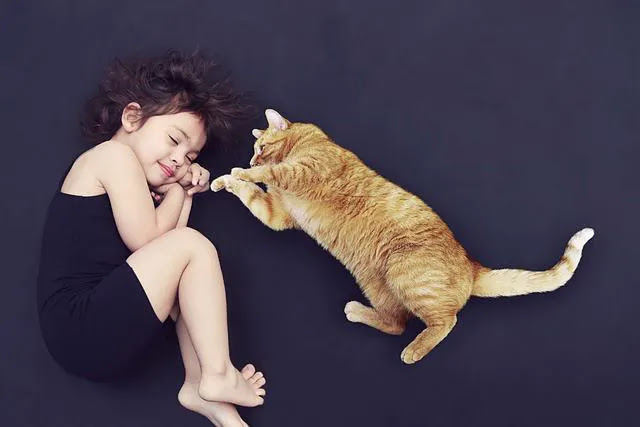Cats and children have been sharing homes for centuries. While some people may believe that cats are not compatible with children, others swear by their feline friends as great companions for kids. So, the question arises, "Are cats good with children?" In this article, we will explore this topic in detail and find out whether cats make great companions for kids.
Table of Contents
- Introduction
- Benefits of having cats with children
- Teach responsibility
- Provide emotional support
- Reduce stress
- Risks of having cats with children
- Allergic reactions
- Scratches and bites
- Zoonotic diseases
- Tips for ensuring a safe and healthy relationship between cats and children
- Supervision
- Teaching respect for cats
- Proper hygiene
- Regular veterinary check-ups
- Conclusion
- FAQs
Introduction
Cats are fascinating creatures that have been domesticated for over 10,000 years. They are known for their independence, intelligence, and affectionate nature. Children, on the other hand, are curious, energetic, and love to play. The question of whether cats are good with children is a valid one, and the answer depends on various factors.
Benefits of having cats with children
Teach responsibility
Having a cat at home can teach children the importance of responsibility. They learn to take care of another living creature and develop empathy towards animals. They also learn to follow a routine, such as feeding the cat at specific times, which can help them in the long run.
Provide emotional support
Cats are known for their calming effect and can provide emotional support to children. Children who suffer from anxiety or stress can benefit from having a cat around. The simple act of stroking a cat can reduce stress and anxiety levels.
Reduce stress
Pets, including cats, are known to reduce stress levels. They provide a sense of comfort and companionship, which can be especially beneficial for children who may be going through a challenging time.
Risks of having cats with children
Allergic reactions
Some children may develop allergies to cats, which can cause sneezing, itching, and even asthma attacks. It is important to test for allergies before bringing a cat home.
Scratches and bites
Cats have sharp claws and teeth that they use for hunting and playing. Children may accidentally provoke a cat, leading to scratches and bites. It is important to teach children how to interact with cats safely and avoid any rough play.
Zoonotic diseases
Cats can carry diseases that can be transmitted to humans, such as toxoplasmosis and cat scratch fever. It is crucial to maintain proper hygiene and take the cat to the vet regularly to prevent the spread of these diseases.
Tips for ensuring a safe and healthy relationship between cats and children
Supervision
Children should never be left unsupervised with cats. An adult should always be present when a child is interacting with a cat, especially if the child is under five years old.
Teaching respect for cats
Children should be taught to respect cats and treat them gently. They should not be allowed to pull the cat's tail or ears or disturb them while they are sleeping.
Proper hygiene
Maintaining proper hygiene is essential when it comes to cats and children. Children should wash their hands thoroughly after playing with the cat, and the litter box should be cleaned regularly to prevent the spread of germs.
Regular veterinary check-ups
Regular veterinary check-ups are crucial for the health of both the cat and the child. The cat should receive all the necessary vaccinations
FAQ
Q: Are cats good with children?
A: Yes, cats can make great companions for children of all ages. However, it's important to consider your specific situation and take steps to ensure a positive relationship between your cat and your kids.
Q: What are the benefits of owning a cat for families with children?
A: Cats can help teach children responsibility, as well as provide emotional support and companionship. They are also generally low-maintenance pets, making them a good choice for busy families.
Q: What factors should I consider when introducing a cat to my children?
A: You should consider the age of your children, your cat's personality and history, and your children's experience with animals. It's important to introduce your cat to your children gradually and supervise their interactions.
Q: How can I teach my children to interact with our cat in a safe and respectful manner?
A: You can teach your children to pet and handle the cat gently, and to respect the cat's boundaries. You should also supervise their interactions and teach them not to bother the cat when it's eating or sleeping.
Q: What are some common misconceptions about cats and children?
A: Some people believe that cats are aloof, not good with children, and not affectionate. However, these are often misconceptions, and cats can form close bonds with both children and adults. It's important to understand your cat's individual personality and needs.

Comments
Post a Comment